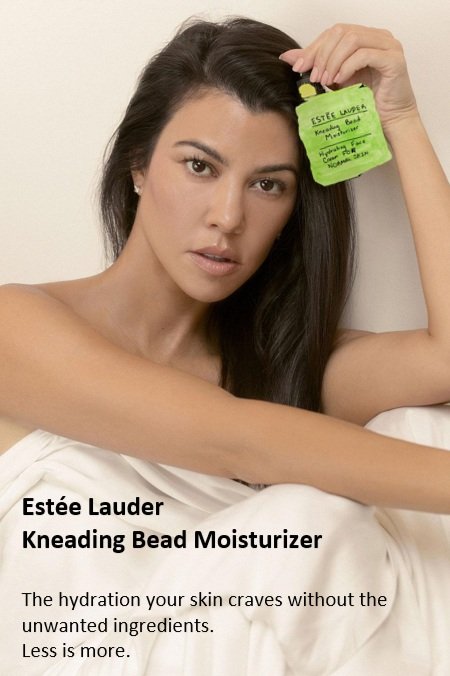Estee Lauder
Product DevelOPMENT*Disclaimer: The advertisements featured on this webpage are not endorsed by or affiliated with Estee Lauder or Kourtney Kardashian. These were created for project purposes only.*
Established in 1946, Estée Lauder founded her company with just four skincare products. For this project in particular, my goal was to revisit the company’s origins. Introducing Estée Lauder Kneading Bead Moisturizers- the newest line of clean facial creams made with natural ingredients, sold in sustainable packaging. The product would be available for first-time purchase in a pale green, glass jar filled with 5oz of pearl shaped balls containing moisturizer along with small metal tongs to grab the product from the jar. These small, premeasured beads of cream would melt when massaged in your hands to reveal the perfect amount of product for every use. After your first use, the product could be purchased in pale green, refill bags made of 100% recycled paper. Kneading Bead Moisturizers would be perfect for any woman wishing to lower her carbon footprint while maximizing the benefits provided by natural skincare!
WHY?
During my research, I identified numerous advantages to launching this skincare line. Often, incorrect use of a skincare product can hinder it’s intended benefits or lead to adverse reactions, depending on if the consumer used too much or too little of the product. This design addresses those concerns by providing the user with the recommended product amount per use.
According to a Forbes article from 2019, the cosmetics industry generates over 120 billion units of packaging yearly; this product’s sustainable packaging could help minimize the brand’s annual waste production.
Moreover, the organic/clean skincare market has seen consistent growth since 2005, surpassing the cosmetic industry growth rate as a whole. According to a study which examined the US, UK, Germany, France, and China, on average 72% of participants considered clean beauty important. Additionally, 64% emphasized the significance of clean and organic ingredients and 60% prioritized sustainability when making purchase decisions.
If you’d like to read more about the research that went into this project as well as accompanying retail and marketing strategies, please use this link.
2021



